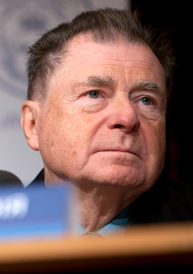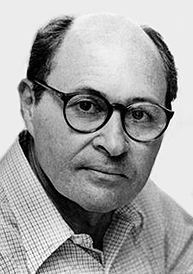 Richard F. Heck
Richard F. Heck
Richard F. Heck, the Willis F. Harrington Professor Emeritus in the Department of Chemistry and Biochemistry at the University of Delaware, received the Nobel Prize in Chemistry on Dec. 10, 2010, in Stockholm.
Heck was honored alongside fellow researchers Akira Suzuki of Hokkaido University in Sapporo, Japan, and Ei-Ichi Negishi of Purdue University, “for palladium-catalyzed cross couplings in organic synthesis.” They shared a $1.5 million award.
According to the Nobel statement, the scientists were honored for discovering “more efficient ways of linking carbon atoms together to build the complex molecules that are improving our everyday lives.”
Palladium-catalyzed cross coupling is used in research worldwide, as well as in the commercial production of pharmaceuticals and molecules used in the electronics industry.
In the 1960s, Heck discovered that arylmercury compounds undergo coupling reactions with alkenes when treated with either stoichiometric or catalytic palladium reagents. In the early 1970s, Heck (independently with Mizoroki) reported that these reactions could also be carried out using less toxic aryl halides in place of the mercury reagents, giving rise to the modern form of the reaction. This transformation has become known as the Heck Reaction. One of the most widely practiced transformations for carbon-carbon bond formation in organic synthesis, the Heck Reaction has had broad impact and is used in preparing countless complex organic molecules, including many pharmaceutical agents. A modification of the Heck Reaction, known as the Sonogashira Coupling, plays a key role in preparing the fluorescent dyes used in DNA sequencing.
Heck’s contributions have been recognized through a number of prestigious awards. In 2004, the University of Delaware Department of Chemistry and Biochemistry established the Heck Lectureship, an annual award given in recognition of significant achievement in the field of organometallic chemistry. In 2005, he was awarded the Wallace H. Carothers Award, bestowed by the Delaware section of the American Chemical Society for creative applications of chemistry that have had substantial commercial impact. In 2006, he received the Herbert C. Brown Award for Creative Research in Synthetic Methods from the American Chemical Society.
Heck was born in Springfield, Mass., on Aug. 15, 1931. He completed his bachelor of science degree (1952) and his doctorate (1954) at the University of California Los Angeles (UCLA). After postdoctoral work, he took a position with Hercules in Wilmington, Del., in 1957, and joined the faculty of the University of Delaware in 1971, where he remained until his retirement in 1989. Heck died on Oct. 9, 2015, in Manila, the Philippines, where he lived. He was 84. His pioneering research changed the world in many fields, including pharmaceutical manufacture and discovery, DNA sequencing and electronics.
UD Video | (1) In Memoriam | (1)

 Daniel Nathans
Daniel Nathans